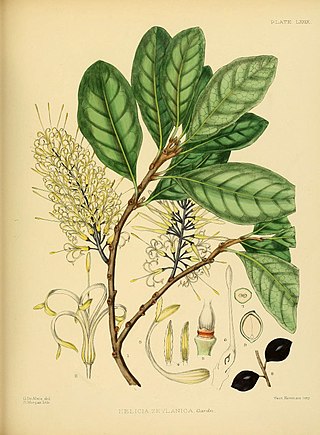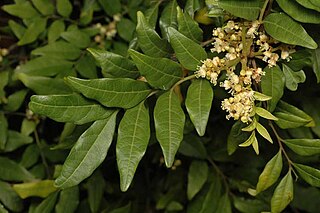| Guioa | |
|---|---|
 | |
| Guioa acutifolia , glossy tamarind, flowers and foliage, Kewarra Beach, Cairns, north-eastern Queensland, Australia | |
 | |
| Guioa semiglauca trunks in a stand at Foxground, Illawarra, New South Wales, Australia | |
| Scientific classification | |
| Kingdom: | Plantae |
| Clade: | Tracheophytes |
| Clade: | Angiosperms |
| Clade: | Eudicots |
| Clade: | Rosids |
| Order: | Sapindales |
| Family: | Sapindaceae |
| Tribe: | Cupanieae |
| Genus: | Guioa Cav. [1] [2] |
| Type species | |
| Guioa lentiscifolia Cav. | |
| Species | |
See text | |
Guioa is a genus of about 78 rainforest tree species known to science, which constitute part of the plant family Sapindaceae. [1] [2] They have a wide distribution, ranging from throughout Malesia, in Burma, Cambodia, Vietnam, Thailand, Malay Peninsula, Borneo, Sumatra, Philippines, Java, Flores, Timor, Sulawesi, Moluccas, New Guinea, further southwards through the east coast of Queensland and New South Wales, Australia and further eastwards to the Pacific Islands, including Tonga, New Caledonia, Fiji and Samoa. [2] [3] [4]
Contents
At global, national and regional government scales, many Guioa species have been threatened with extinction, as officially recognised by the International Union for Conservation of Nature (IUCN) and by continental, national and local governments. Twenty five species, or more, have official IUCN global conservation statuses of either "critically endangered", "endangered" or "vulnerable" (to global extinction).
The Australian species are known to the logging industry as cedars, though they have no direct relationship with true cedars or the Australian members of the Meliaceae which are known as cedars.



